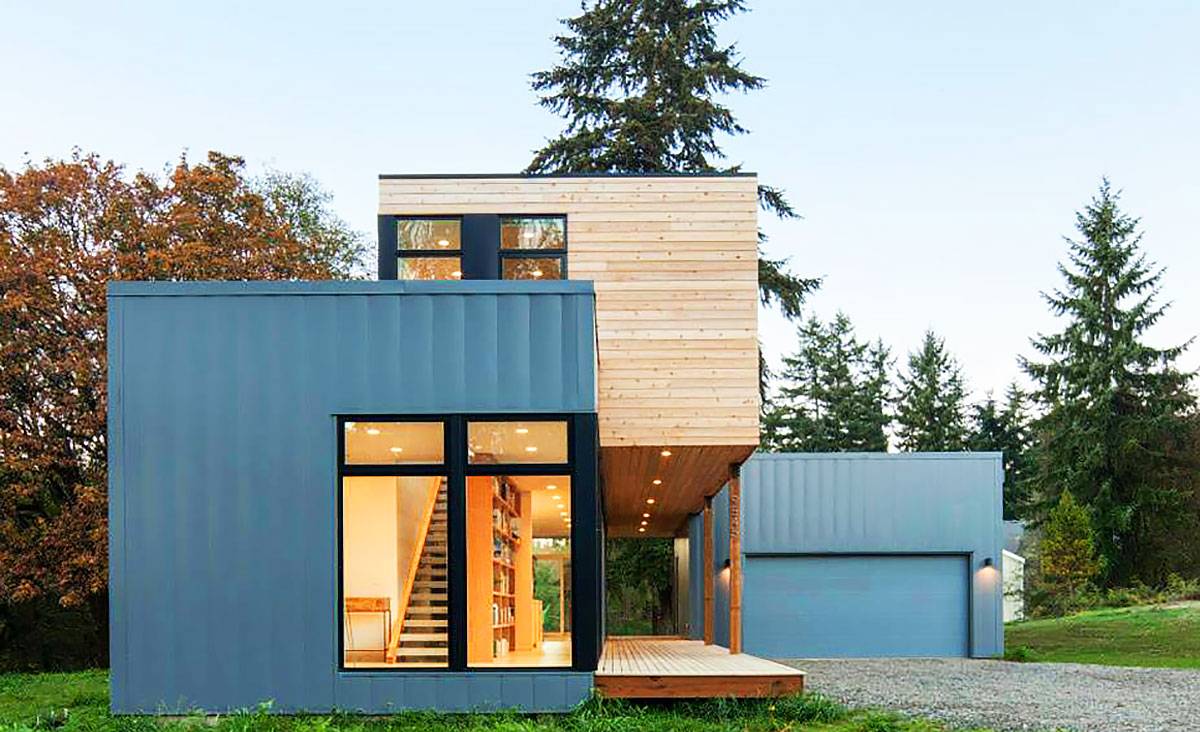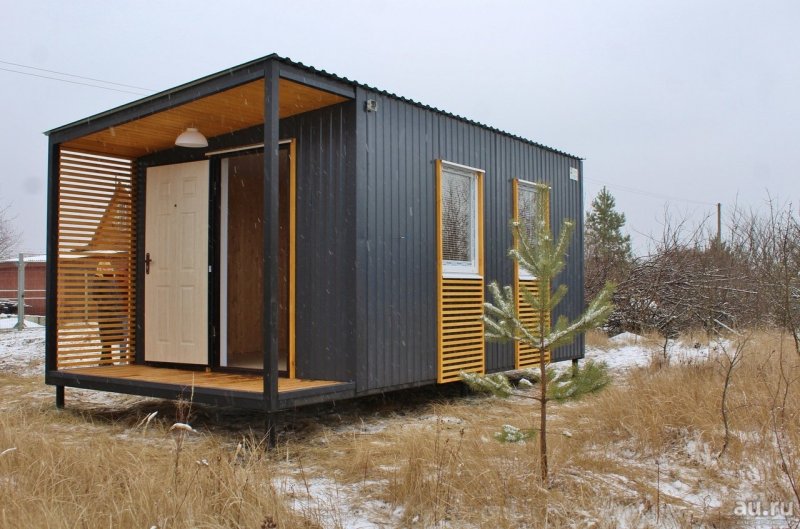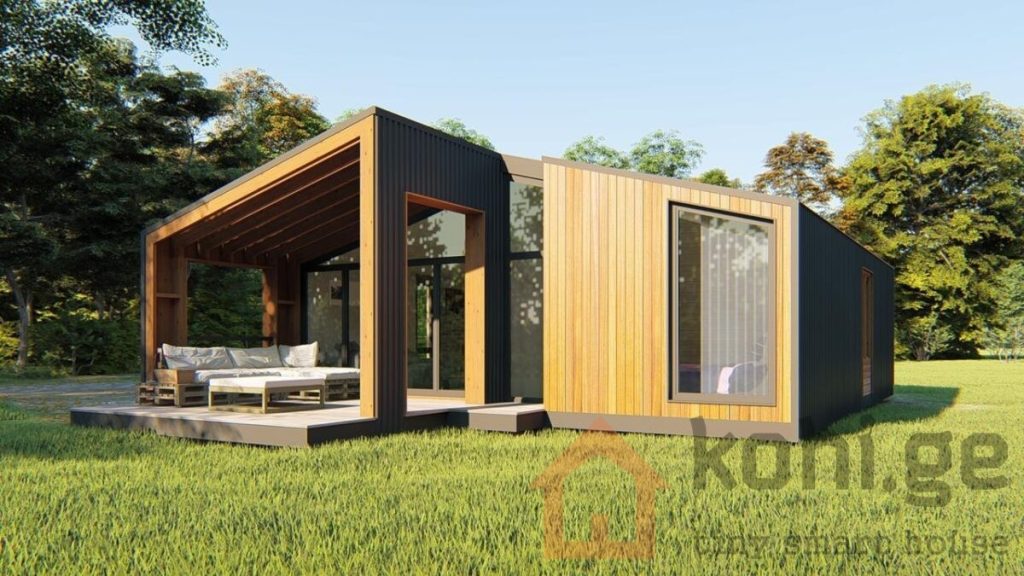Challenges and Solutions of Building Container Houses

Container houses are becoming increasingly popular worldwide due to their affordability, sustainability, and versatility. These structures are constructed using shipping containers, which are readily available and cost-effective. Container houses are eco-friendly and can be customized to suit individual needs and preferences. In Pakistan, container houses have gained popularity in recent years as they provide a feasible solution to the country’s housing crisis. These structures can be built in remote areas with limited access to traditional building materials and resources, making them ideal for disaster-stricken or impoverished areas.
However, building a container house in Pakistan has its own challenges. It requires proper planning, design, and construction techniques to ensure the structure is safe, comfortable, and meets local building codes and regulations. Additionally, Pakistan’s hot and humid climate can pose challenges for container houses, as the metal structure can absorb and retain heat, making it uncomfortable for inhabitants.
This article will discuss the challenges and solutions of building a container house in Pakistan. We will explore container houses’ design, construction, and maintenance aspects and provide tips and insights on making container homes more comfortable and sustainable in Pakistan. Whether you’re planning to build a small vacation home or a larger residential or commercial structure, this guide will help you navigate the process of building a container house in Pakistan.
Insulation:
Insulation is a crucial aspect of any building, and container houses are no exception. The walls of shipping containers are typically made of steel, which conducts heat and cold, making the interior uncomfortable without proper insulation. Insulation also helps to prevent moisture and condensation from forming inside the container, which can lead to mold and other issues.
There are several options for insulation for container house, including spray foam, rigid foam board, and blanket insulation. Spray foam is a popular choice as it provides a complete seal against air and moisture and can conform to the unique shapes of the container walls. Rigid foam board insulation is also effective and can be cut to fit precisely into the container’s wall cavities. Blanket insulation is another option, which involves installing insulation batts between the container’s steel studs.

One major challenge is the limited space and layout options, which require careful planning and design. It is crucial to work with a knowledgeable and experienced architect or contractor who can help optimize the use of space and create a functional and comfortable living area. It is essential to choose the right insulation material and thickness for your container house based on the climate in your area. Sevgili tadında görüşme yapan kadınlar eskort sayfasında sizi bekliyor. This will ensure that the house interior remains comfortable and energy-efficient year-round. Proper insulation can also help to reduce heating and cooling costs, making it a worthwhile investment for any container house project.
Structural Integrity:
When building a container house, ensuring structural integrity is critical to the safety and durability of the structure. As containers are designed for shipping purposes and not for habitation, it is essential to reinforce the containers to withstand the demands of a home. One of the most common ways to ensure structural integrity is to use a steel frame to reinforce the containers. The steel frame is welded onto the containers, creating a strong structure that can support the weight of the containers and the roof. Additionally, the steel frame allows for the installation of windows and doors, giving the container house a more traditional look.
Another aspect of ensuring structural integrity is the proper placement and anchoring of the containers. The containers must be placed on a solid foundation, such as a concrete slab or piers, to prevent settling or shifting. Additionally, the containers must be anchored to the foundation to prevent movement during extreme weather conditions. Finally, ensuring the container house is built to meet local building codes and regulations is important. Working with a reputable contractor with experience building container houses can help ensure the structure is safe and structurally sound.
Moisture and Condensation:
Moisture and condensation are significant concerns when building a container house. Containers are made of steel, which can quickly conduct heat and cold. When the temperature outside the container differs from the temperature inside, moisture can accumulate, leading to condensation. This can cause damage to the interior of the container, leading to mold, mildew, and corrosion. To address this issue, it is crucial to properly insulate the container. Insulation helps regulate the temperature inside the container and minimizes the risk of condensation.
There are various insulation options, such as spray foam, rigid foam board, or fiberglass batts. Proper ventilation and dehumidification can also help control moisture levels and prevent condensation from forming. It is also essential to ensure that the container is properly sealed and that any gaps or openings are sealed with a moisture-resistant sealant. Also, moisture-resistant building materials, such as drywall specifically designed for high-moisture environments, can help prevent moisture-related issues.
One major challenge is the limited space and layout options, which require careful planning and design. It is crucial to work with a knowledgeable and experienced architect or contractor who can help optimize the use of space and create a functional and comfortable living area. By addressing moisture and condensation concerns during the construction of a container house, homeowners can help ensure that their home remains comfortable, healthy, and structurally sound for years to come.
Building Codes and Permits:
When building a container house, adhering to local building codes and obtaining the necessary permits is important. These regulations vary depending on location, but they usually involve foundation, insulation, electrical wiring, plumbing, and fire safety requirements. Researching and consulting with local authorities is important to ensure that the container house meets all the necessary standards and codes. Failure to obtain the appropriate permits and follow building codes can result in fines, legal issues, and safety concerns. One major challenge is the limited space and layout options, which require careful planning and design. It is crucial to work with a knowledgeable and experienced architect or contractor who can help optimize the use of space and create a functional and comfortable living area.

The steel structure allows for the installation of windows and doors, giving the container house a more traditional look. In addition, it cannot be easy to insure a container house without proper permits and adherence to building codes. By taking the time to research and comply with regulations, homeowners can avoid potential setbacks and ensure the safety and legality of their container houses.
Aesthetics:
Regarding aesthetics, container houses can be designed to look modern and stylish or more rustic and unique. With the help of an experienced architect or designer, homeowners can customize their container homes to suit their personal preferences and match the surrounding landscape. One popular trend is to combine multiple containers of different sizes and orientations. In order to create a visually interesting and dynamic structure. One major challenge is the limited space and layout options, which require careful planning and design. It is crucial to work with a knowledgeable and experienced architect or contractor. Who can help optimize the use of space and create a functional and comfortable living area.
Additionally, the exterior of the containers can be painted or finished with different materials. Such as wood or stucco, to give them a unique look. Interior design can also be customized to create a comfortable and inviting living space, with insulation, drywall, and flooring options. By carefully selecting the right materials and finishes, container homes can offer functionality and aesthetics. Making them an attractive option for a unique and modern living space.
Conclusion
In conclusion, building a container house can be an exciting and cost-effective option for those looking to own a home. However, it is important to be aware of this type of construction’s potential challenges and solutions. One major challenge is the limited space and layout options, which require careful planning and design. It is crucial to work with a knowledgeable and experienced architect or contractor. Who can help optimize the use of space and create a functional and comfortable living area.
Another challenge is the insulation and ventilation of the container. Which can lead to problems such as condensation and mold growth. Proper insulation and ventilation systems are key to preventing these issues and ensuring a healthy living environment. Furthermore, the foundation of the container house must be properly constructed to provide stability and prevent settling or shifting. This may require additional costs for excavation and foundation work.
However, with careful planning, design, and construction, a container house can offer many benefits. Such as cost savings, durability, and sustainability. It is also a unique and customizable option allowing home design creativity and individuality. In addition, building a container house promotes sustainability by repurposing shipping containers and reducing environmental waste. This eco-friendly alternative to traditional construction methods can appeal to those seeking to live a more sustainable lifestyle.
Overall, building a container house requires careful consideration of the challenges and solutions involved. With the right planning, design, and construction, a container house can offer a comfortable, unique, and cost-effective living space. That meets the needs and preferences of its inhabitants.
Read More : The Real Estate Market